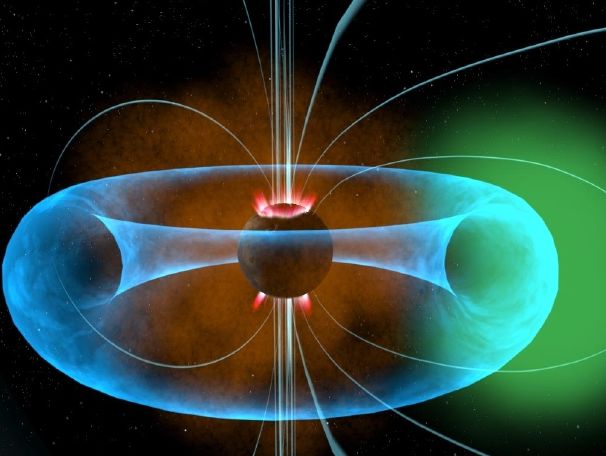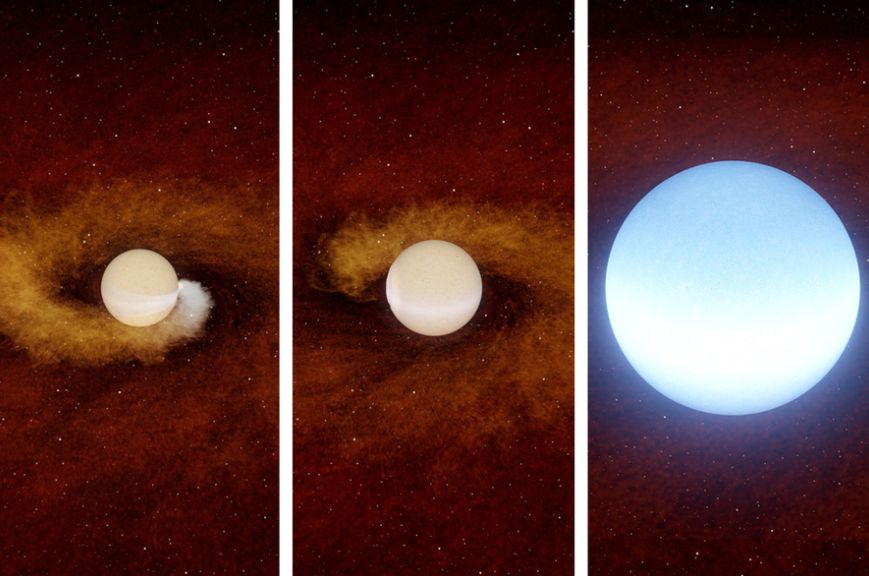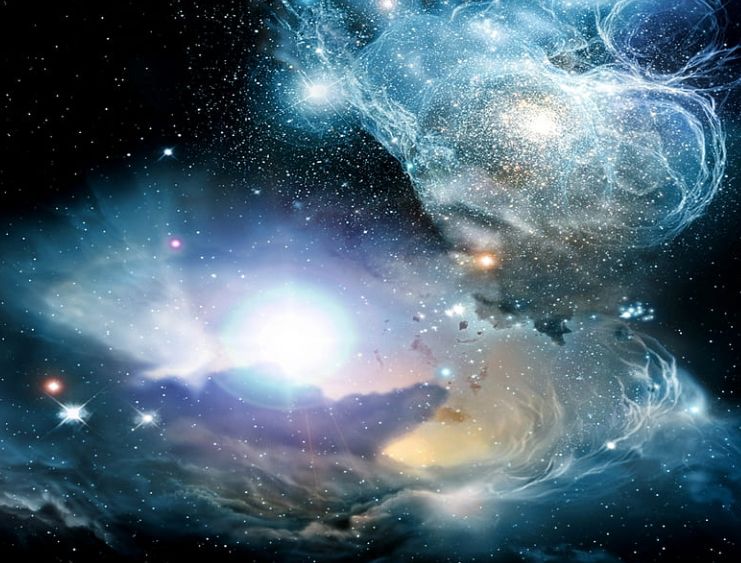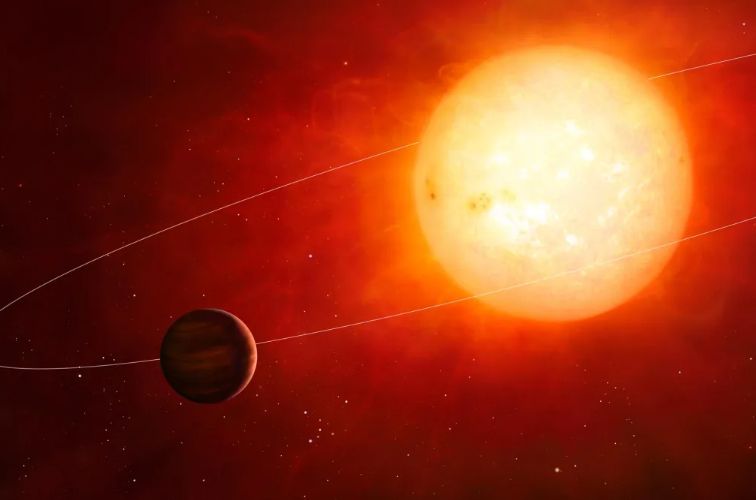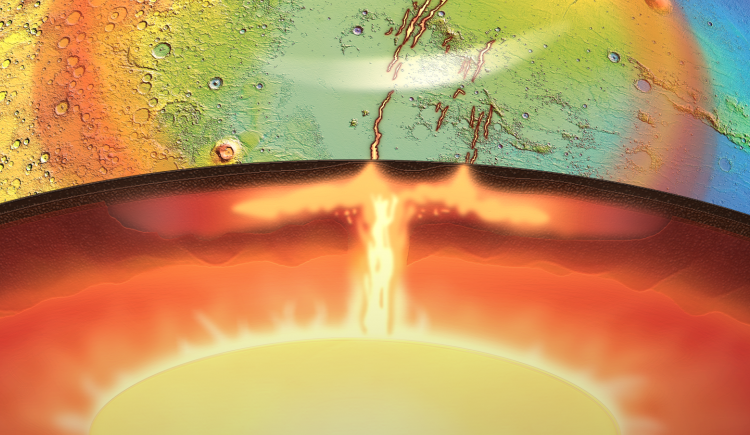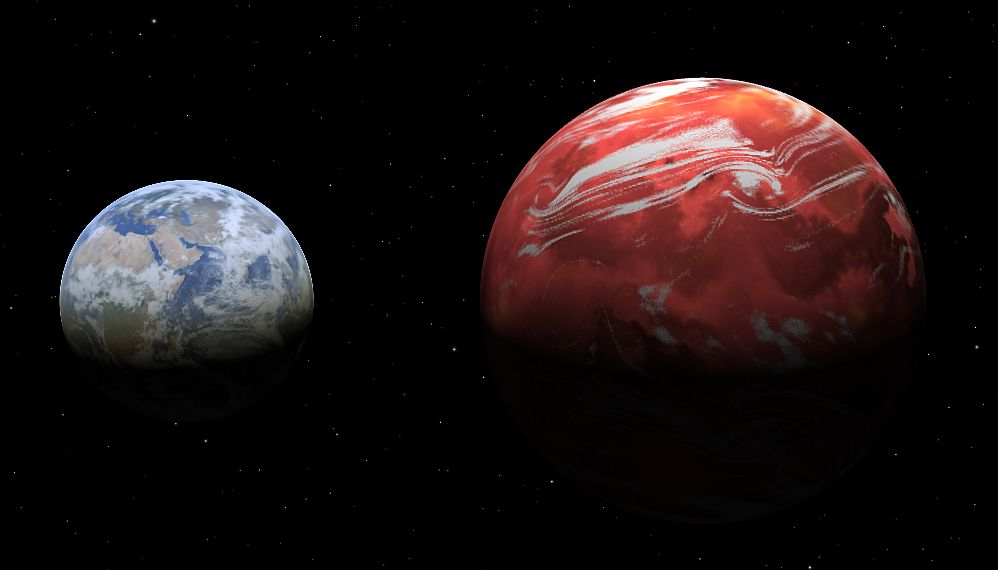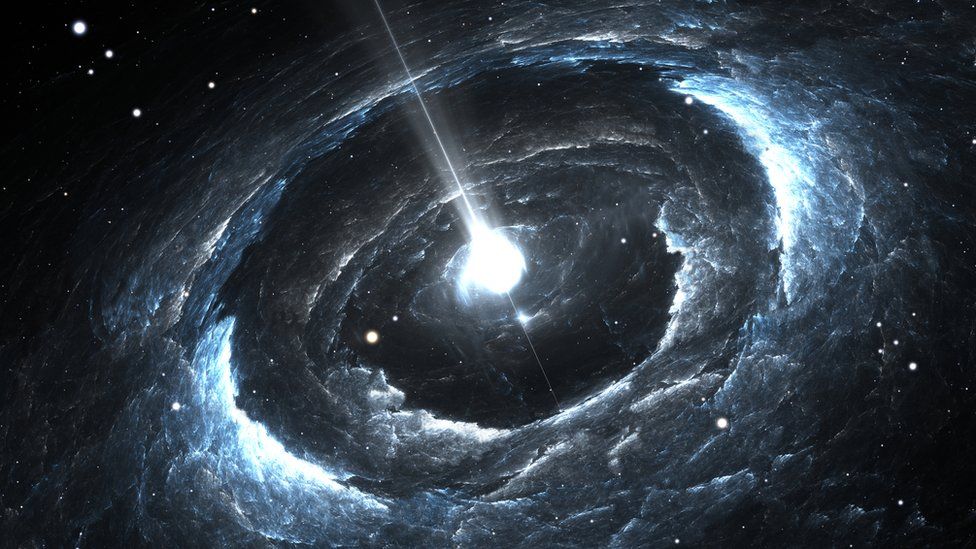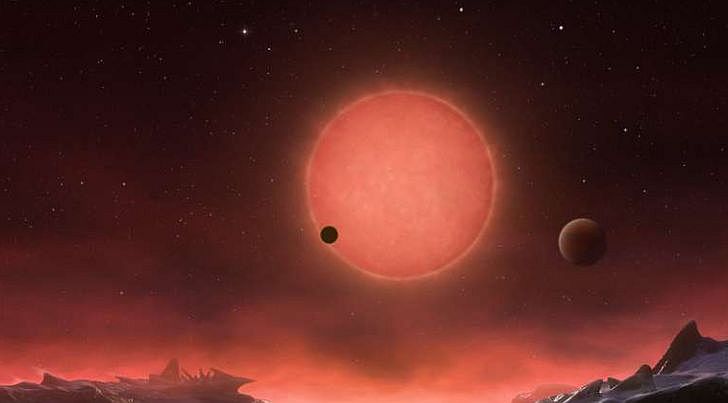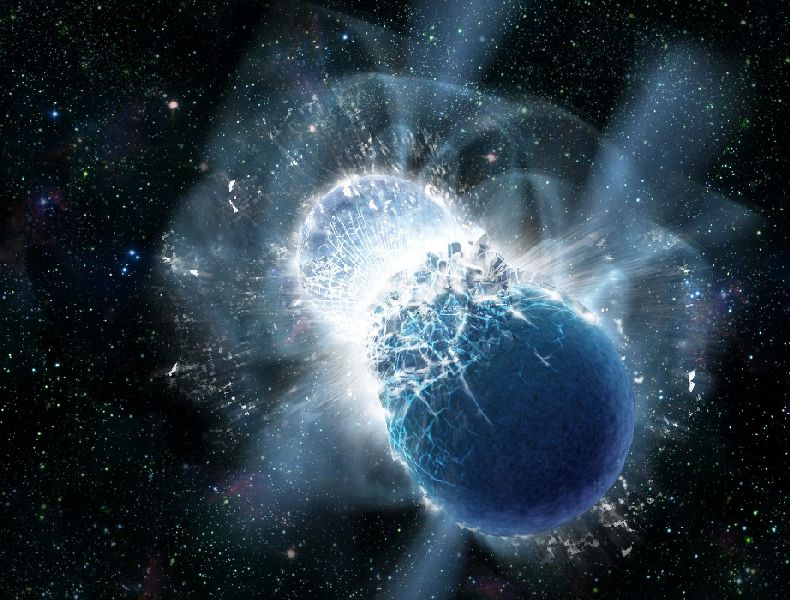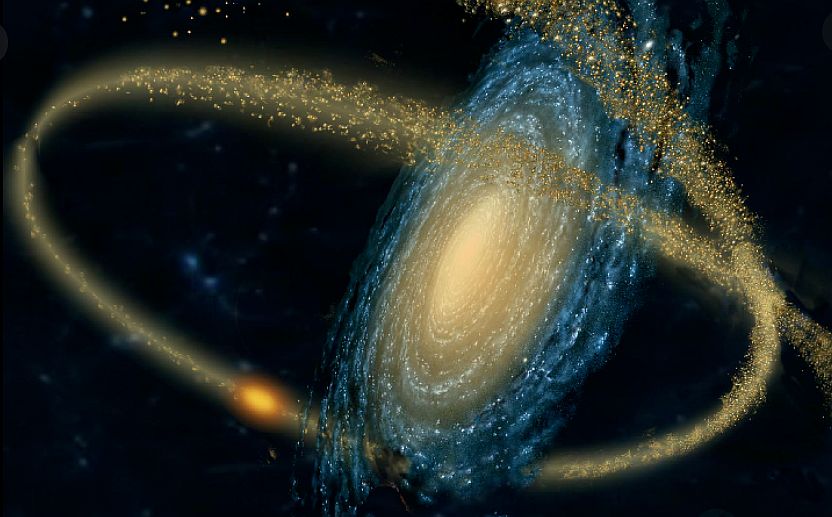Researchers at Japan have discovered some new information about why all amino acids found on Earth are in a specific shape called “left-handed” or “L-form.” The team studied amino acids found in a meteorite called the Murchison meteorite. They also used computer simulations based on physics to understand how this shape came about.
Read MoreTag: space science
Magnetic Bubble Beyond our Solar System: Radiation Belt around an Ultracool Dwarf
Radiation belts are zones of charged particles, primarily electrons and protons, trapped by a planet’s magnetic field. They are typically found around planets with a significant magnetic field, such as Earth or Jupiter. These belts produce various radiations, including radio emissions, which can be detected and studied by radio telescopes.
Read MoreA Star Swallowing Jupiter-sized Planet: Planetary Engulfment
When a star runs out of fuel, it eventually reaches the end of its life cycle and begin to expand. It swells to hundred or even a thousand times its original size. The process is called as a “red giant” phase. The progression enables the star’s outer layers to become less dense. Consequently, the star starts to swell outwards. In some cases, the star may expand so much that it engulfs any nearby planets.
Read MoreAltered Gravity can give Suppressive Effect: Immune System in Space
Short-term exposure to altered gravity, such as the brief periods of weightlessness experienced during parabolic flights, is generally not considered to be harmful to human health. However, it’s important to note that even short periods of altered gravity can slightly thought not exponentially affect the body in various ways. For example, during periods of weightlessness, fluids tend to shift from the lower body to the upper body, which can cause a decrease in blood volume and an increase in pressure in the head and upper body. This can result in…
Read MoreStellar Nurseries Hotbed of Chemical Activity: Star Formation
Astronomers have discovered a potential key step in the chemical process that occurs in “stellar nurseries,” which are clouds of gas and dust in space that eventually form young stars and planets.
Read MoreTwo Earth sized Planets Orbit a Red-dwarf: GJ 1002 System
In an international collaboration between astronomers, two planets orbiting a red-dwarf star have been identified. The planets, GJ 1002 b and c, are 16 light-years away and about the size of Earth. Both lie within the star’s habitable zone. Which means, the orbital distance is enough to allow liquid water to form on the surface provided it has the right kind of atmosphere.
Read MoreActive Mantle Plume on Mars: Martian Geodynamic Evolution
Cumulative evidence, so far has suggested that Mars once had oceans but then lost its atmosphere and eventually died out. Unlike Earth, where shifting tectonic plates make way for dynamic interior, Mars never surfaced such processes. Hence, the astronomers concluded that nothing much happened on the red planet, at least, in the last 3 to 4 billion years. Recent observations by the scientists at the University of Arizona, however has challenged the current views of Martian geodynamic evolution. As per them, the red planet, that seems to be dead, has an…
Read MoreA Super-Earth orbiting Dwarf Ross 508: Exoplanet Exploration
Astronomers work ceaselessly to find out clues that might point out to the existence of extra-terrestrial life some where in outer space. The mere idea that we might not be alone is enough motivation to work constantly in this hunt. Lately, there has been an increase in the number of research probing into exoplanets. In one such research, astronomers have discovered a super-Earth like planet near the habitable zone of a red dwarf star. It is about 37 light-years from the Earth. This also happens to be the first such…
Read MorePeriodic Pattern of Fast Radio Bursts Detected from Another Galaxy: Mysterious Space Signals
Astronomers at MIT and Canada have traced a periodic radio signal coming from a distant galaxy. The signal is quite intense and hence, fall under the category of fast radio burst a.k.a FRB. Usually, FRB lasts for about a few milliseconds, however, the newly discovered signal has continued for three seconds. During this time frame, the astronomers also traced bursts of radio waves that reiterated every 0.2 seconds in a distinct periodic pattern. The rhythming pattern of the radio waves resembled a beating heart.
Read MoreMoon Soil Can Grow Terrestrial Plants: Tiny Lunar Garden
For the first time in human history, space scientists were able to grow plants in the soil from the moon. With the plants sprouting from the moon soil, lunar exploration seems pretty incredible. University of Florida researchers were able to prove that moon soil – also called as lunar regolith – can grow terrestrial plants. They also investigated that for the plant it wasn’t an easy journey. Nevertheless, this effort is the first step towards understanding how plants respond biologically to the Moon’s soil. This insight will surely help NASA’s…
Read MoreInterview: Dr Arthur Suvorov, An Astrophysicist at The Manly Astrophysics, Australia and Uni. of Tübingen
Dr. Arthur Suvorov is an astrophysicist at The Manly Astrophysics in Australia. He did first class honors degree at Monash University, in a double-dose of mathematics with physics on the side. Followed by his PhD from Melbourne Uni. His areas of interest include various aspects of neutron star. Lately, he collaborated with Universidad de Murcia, Spain in a project entitled “Magnetically supramassive neutron stars”, paper of which is also published in Physical Review Letters (DOI: 10.1103/PhysRevD.105.L061302). Dr. Suvorov is also the recipient of one of the most prestigious Humboldt…
Read MoreTwo Rocky Worlds Orbiting M Dwarf Star: The HD 260655 System
Astronomers at NASA have identified two rocky alien worlds hovering around M dwarf star called HD 260655. M stars have faint glow and they look red to our eyes with temperature ranging from 2,500 Kelvin to 3,500 Kelvin. These stars account for nearly 75% of the stars in our stellar neighborhood, which implies they can be easily observed from Earth due to its abundance. As per Transiting Exoplanet Survey Satellite (TESS), the newly discovered exoplanets are about two times more massive than the Earth.
Read MoreTwo Neutron Stars could give Birth to a Third: Stellar Formation
An international team of astrophysics from Manly Astrophysics and Universidad de Murcia has proposed for a new type of exotic neutron star. According to astronomers Arthur Suvorov and Kostas Glampedakis, the novel neutron star could be the result of a super strong magnetic field that emanates during a collision between old neutron stars.
Read MoreHuge Gas Planet Hidden in Plain Sight: TOI-2180 b
Hunt for a new stellar body is always on. Space is full of astronomical bodies and star gazers continuously search for new stars and planets into the known realm of humanity. In one such effort, an astronomer at University of California, Riverside in collaboration with a group of citizen scientists have spot a huge gas planet. The newly discovered body is otherwise hidden from view by typical stargazing tools.
Read MoreStellar Streams’ Trajectory Reveals the Dark Matter: Mysterious Universe
Understanding the properties of dark matter is the most important quest for astronomers. Many have dedicated their years to research just to take a sneak peek into what actually comprises of dark matter. In a recent research, astronomers have detected twelve streams of stars spiralling within the outermost region of our galaxy.
Read More

